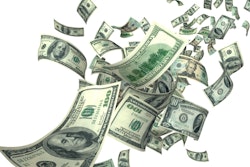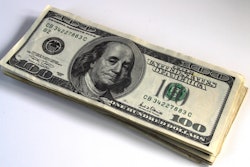You never seem to hear enough about utilization. At this point in the cycle many of you could probably care less because the demand for your products is high and you are getting better rates. And, to top it off, there is probably a line waiting outside for the next unit that comes off rent. Right now, things are good.
But no matter how good things are, it's best to keep your eye on the ball, on the budget and on the cash flow. No big secret there. Thinking ahead, it might even be a good idea to review your budget and cash flow three years out to see what kind of potential results you're looking at. You might even want to apply some sensitivity analysis, say a 20-percent swing either way of budget, to see what effect these swings have on earnings and cash flow.
But no matter what you do, the key to earning and keeping cash flow where it needs to be depends on your utilization factors (time and dollar) and expense control. For this discussion we will concentrate on utilization.
Utilization can be calculated a million ways, and that is a potential problem. On the other hand, time utilization, no matter how you calculate it, is probably the more important of the two utilization factors because without adequate rental hours you cannot possibly generate adequate dollar utilization, gross profits, pre-tax profits and cash flow to fund the business.
Dollar utilization is the easiest to measure because it is merely a percentage of rents billed against the cost of the unit. When you think about it, cost is cost and there are not many ways to play with “cost.” Dollars billed against cost is pretty straightforward.
Each rental unit has a cash nut to meet each and every month, and in most areas this business operates on a seasonal basis so you have good months that offset the bad months. The goal is an overall profit for each unit, assuming the annual dollar utilization meets the required amount.
Want to improve utilization? Everybody does, but which one? You have to think about that when you say you want to improve utilization because the approach you take can be entirely different. Keep in mind, however, that the only metric that matters is cash flow. Don't assume high utilization rates alone will get you there.
As an example, let's assume you want to increase time utilization. How would you go about that? You could lower your rates, you could prune the fleet by selling off units with poor utilization, you could buy cheaper product and thus lower rates into the market, you could find new customers for the product, you could get rid of poor-performing lines, you could bring on a new line you feel is demanded in the market and you could sell longer-term leases with maintenance. There are many ways to increase time utilization. Then the question becomes what it does to cash flow.
Lowering rates will initially lower billing and thus cash. If utilization increases on these units it might increase enough to offset the rate reduction. If it doesn't, you're adding hours on your equipment that are not generating any overall profit — something to think about.
Lowering rates has to be considered in conjunction with your monthly note obligations. You still need enough cash to meet the payroll and note payments. You want to be careful about lowering rates too much.
Pruning the overall fleet to increase utilization should be done on a regular basis as long as the units you plan to sell off generate enough cash to pay off any remaining loan balance. Since this balancing act is necessary on a regular basis, it pays to think about the structure of the rental fleet and your note obligations. If you can, you should stagger the additions to the rental fleet so you always have some pretty much paid off. Those are the ones you can remove from the fleet without getting burned.
On the dollar utilization side you can improve utilization by buying cheaper units or used units and getting street rates for the rental. Your cost is lower and therefore your utilization will be higher. You can also concentrate on customers who need weekly or daily rentals as opposed to monthly rentals. With the premium of the weekly or daily rentals you can generate the same rental billings with less time utilization. If you haven't ever reviewed a billing matrix for your fleet you should do so. You will be amazed at what you find.
For example, let's assume you purchase a $100,000 unit. If you rent it at 5 percent per month with 80-percent utilization, you earn an annual rental of $48,000. To earn that same revenue takes 34 weekly rentals or 115 daily rentals using the standard one-third calculations. Time utilization decreased but cash flow remained the same.
Rental is a constant balancing act and sometimes utilization gets confused with cash flow. It's not the same. No matter how you like to measure utilization, cash flow has to be kept in mind at all times. Your billing has to pay the debt service, payroll, direct costs and operating expenses. Manage each unit keeping these factors in mind and your utilization will take care of itself.


















